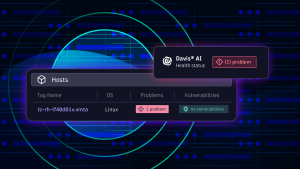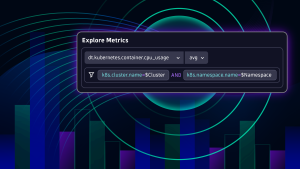At Dynatrace Perform 2022, we highlight how modern observability helps augment the advantages and cure the ills of serverless architecture.
Key takeaways from this article on modern observability for serverless architecture:
|
Serverless architecture is the default for modern organizations
As digital transformation accelerates, organizations need to innovate faster. To keep pace, these enterprises have turned to serverless architecture on multiple cloud platforms to accelerate without getting bogged down in manual IT management and security tasks.
The cloud-based, on-demand execution model of serverless architecture helps teams innovate more efficiently and effectively by removing the burden of managing the underlying infrastructure. Using serverless architecture, teams can focus on strategic and revenue-generating tasks rather than firefighting break-fix issues.
Simply put, cloud-based serverless architecture helps teams maximize performance while also reducing the cost of maintaining IT infrastructure. According to recent Dynatrace data, some 99% of organizations have adopted cloud architecture.
But what makes serverless cloud architecture nimble can also introduce complexity. Modern multicloud architecture is distributed, dynamic, and highly interconnected, comprising many individual applications and microservices. A single modern application often consists of a serverless architecture that includes services from multiple vendors. To get a handle on observability, teams often adopt open-source observability tools, such as Prometheus, OpenTelemetry, and StatsD. But between multicloud platforms and open-source tools, teams can also experience data silos.
As a result, this distributed application model makes it difficult to get real-time visibility and analytics, and even harder to automate operations.
At Perform 2022: Why AI-based observability aids serverless architecture management
With real-time, causation-based AI, customers can identify issues before they affect users without having to train data models upfront. With Dynatrace’s AI-powered observability, the platform is continually learning, rather than having data fed to it as a bolt-on.
This integrated approach to AIOps also enables teams to accelerate innovation by spending less time on manual troubleshooting tasks.
Unlike traditional monitoring tools, a modern observability platform provides visibility into services running in serverless environments across multiple clouds. With this intelligence, teams can instantly identify issues from one end to the other, and implement time-saving automation.
At Dynatrace Perform 2022, the theme is “Empowering the game changers,” where we explore the benefits of modern observability for IT pros who rely on serverless architecture. In the “Advancing dynamic, cloud-native workloads” track, we’ll explore the ability of AI to automatically discover issues and provide real-time answers on how to resolve them. Themes from this track include:
- Gaining insights across multiple serverless platforms. Teams use different cloud platforms to take advantage of features for different purposes. But this diversity also leads to data silos. We‘ll explore how an end-to-end view of multicloud environments with context-driven insights enables teams to boost application performance and automate end-to-end processes.
- Harnessing data from open-source observability tools. Many companies that adopt open-source observability tools such as OpenTelemetry and Prometheus struggle with scattered telemetry data. We’ll discuss how An AI-driven platform approach to observability integrates open-source data with data generated by serverless architectures for comprehensive analysis.
- Getting the most out of OpenTelemetry. The open-source observability framework, OpenTelemetry, provides a common format for how observability data is collected and sent. We’ll explore how an AI-based platform approach can build on that standard, extend it with context-based analysis, and scale it across the enterprise.
- Accelerating cloud migration strategically. The myriad interdependencies of modern cloud applications make refactoring a complex monolithic application challenging. We’ll discuss methods for managing and accelerating cloud migration, and how a complete view of all serverless services and their interdependencies helps you migrate more strategically.
For our complete Perform 2022 conference coverage, check out our guide.
Register for Perform 2022 today, and check out the Advancing dynamic, cloud-native workloads track.





Looking for answers?
Start a new discussion or ask for help in our Q&A forum.
Go to forum